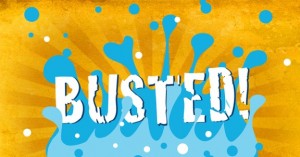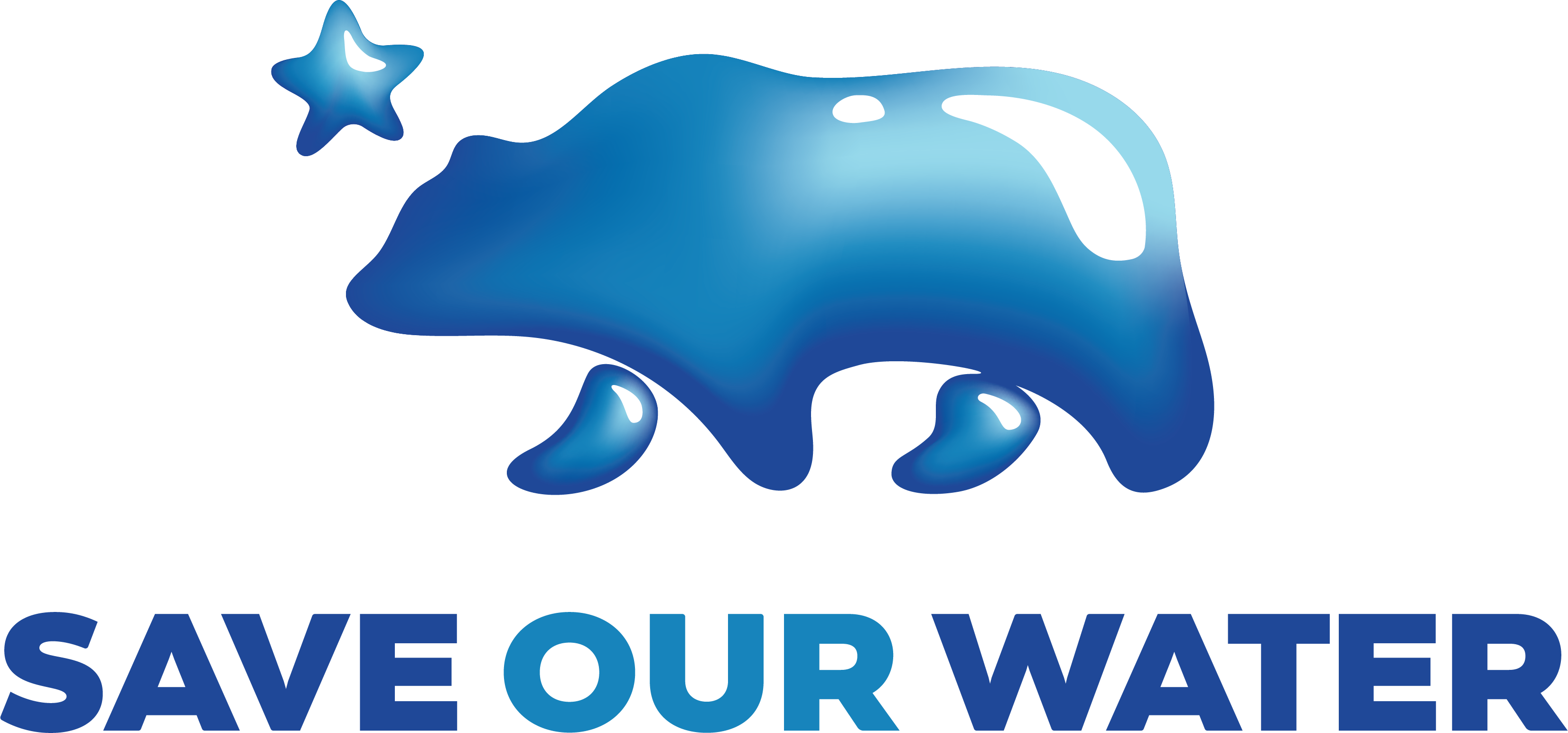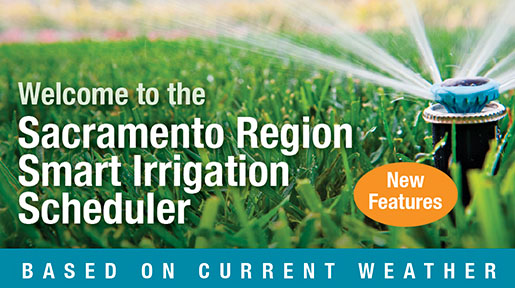Water Myths. Can You Tell Truth from Fiction?
Ever wonder where most water is used at home? Or whether taking a shower or bath saves more water? Or if that old practice of placing a brick in the toilet actually saves water?
Here’s your chance to test your water IQ and bust some myths about water use–at home and in the Sacramento region. In the process, you’ll learn about some great ways to conserve water during this severe drought.
- MYTH or FACT? Most household water use occurs outdoors.
FACT: Most water use–and water waste–occurs outdoors. There are lots of ways to save water, but limiting outdoor watering can make the biggest difference of all.
- How much water does a typical household use in a day?
FACT: The typical Sacramento-area household uses 304 gallons of water per day, and most of that outdoors.
- MYTH or FACT? The best place to conserve water is outdoors.
FACT: Most water use–and water waste–occurs outdoors. There are lots of ways to save water, but limiting outdoor watering can make the biggest difference of all.
- What uses more water? A new landscape with low-water use plants or an established lawn?
FACT: A new landscape that includes low-water use plants, efficient drip irrigation and a water-wise controller typically uses LESS water than required to maintain a green lawn. Once established, low-water use native plants are better suited to handle local climate and soil conditions than non-native grasses, and often need little irrigation or fertilizer. They also provide food and habitat for indigenous wildlife, such as birds and butterflies.
- Does mulch really help conserve water?
FACT: Mulch is like icing on a cake, because it keeps the soil moist the way icing keeps a cake moist. Mulch slows evaporation, allowing water to sink into the soil, moderates soil temperature and breaks down into nutrients for plants. Be sure to add two to three inches of organic mulch (e.g., leaves, wood chips) around trees and plants for the greatest benefit.
- Are all plants created equal?
FACT: Trees are the highest-value plant in your landscape. They provide food for people and animals and shade that helps make hot climates livable. They improve property values and are an investment one generation makes for the next.When considering how to best reduce outdoor water use, prioritize your landscape into three categories:
High value/must save (including valuable trees and shrubs that have taken years to establish, will die without water and have many benefits)
Moderate value/try to save (including certain perennials, newer shrubs that can be replaced and low-water use and native plants that will require little water anyway once established)
Low value/save if possible (including lawn, which can often bounce back successfully from drying out, and annuals)Then ration water across your landscape using limited supplies to water high-value trees and plants first. More information about helping trees survive the drought is available at BeWaterSmart.info.
- MYTH or FACT? A commercial carwash uses less water than home washing.
FACT: Washing your car at home even with a hose shut-off nozzle can waste up to 50 gallons of water every 10 minutes. And, home washing sends contaminated water filled with soap and other chemicals straight into the storm drain. Visit a Be Water Smart carwash instead, which utilize high-pressure, low-volume flow nozzles and also recycle water on-site and reuse it multiple times before sending it to be treated. Find a list of participating carwashes and download a money saving coupon at BeWaterSmart.info.
- MYTH or FACT? All sprinklers are created equal.
FACT: Rotary nozzles are far superior to older nozzles that shoot high, fine sprays into the air. Rotary nozzles throw large drops of water low to the ground, applying water at a rate the soil more easily absorbs, minimizing or eliminating runoff. This change alone will make your sprinklers 20 percent more efficient, which means you use 20 percent less water.
- What’s the best way to reduce water use in your garden?
FACT: Convert sprinklers to drip irrigation for trees, shrubs and flowers. Sprinklers are best suited to lawns. All other planted areas, including trees, shrubs and flowers, should be watered by drip. Drip systems put water where plants need it most–at the roots, eliminating overspray and wind drift. And, unlike sprinklers, water is never blocked by plants. By dripping plants instead of spraying them, you’ll easily use 50 percent less water.
- MYTH or FACT? It’s best to run sprinklers during the night.
FACT: Most water use goes to our landscapes, and of that 30 percent is lost to evaporation or run off. Watering early in the day or later at night conserves water by allowing water to soak into the soil before evaporation and wind can whisk it away. But remember to check your sprinklers at least monthly for broken and misaligned heads, which are easy to miss when sprinklers run during the dark hours.
- MYTH or FACT? Taller grass conserves water.
FACT: Taller grass uses less water, because it shades the soil, keeping it cool and slowing evaporation. Taller grass also promotes a deeper, more extensive root system that can reach down deeper for water even on hot summer days. And as an added benefit, the tall grass shades out weed sprouts, so you’ll have fewer weeds. Adjust the height setting on your mower up one or two notches to keep grass tall!
- What loses more water to evaporation–a swimming pool or a lawn?
FACT: A swimming pool and lawn actually lose water at the same rate to evaporation. On average, pools and spas lose a quarter inch of water per day–and double that in hot or windy weather. By adding a pool cover you can reduce the amount of water lost by up to 50 percent and significantly lower the cost of heating your pool.
- Does adding compost to soil really conserve water?
FACT: Adding compost to soil builds a support system for plants. The sponge-like nature of compost means that any water applied to your landscape will be absorbed and stay in your soil. At the same time, compost and other materials improves soil’s ability to slowly percolate water through it. Follow compost with two to three inches of organic mulch to slow evaporation, protect roots and moderate soil temperature.
- How do you help trees survive the drought?
FACT: Deep, thorough waterings spaced three to four weeks apart can be enough to keep most trees and shrubs alive. Here’s what to do: Water the root zone under the tree’s canopy and about a foot beyond the drip line. Let the water soak in for about an hour. Then, repeat the watering cycle until the soil is moist eight inches below the surface.
- How much water does a garden really need to thrive?
FACT: Most household water use occurs in the landscape, and 30 percent of that is lost to overwatering and evaporation. The easiest way to determine if your landscape really needs water is by testing: Stick an eight-inch screwdriver into the ground. If you can push it more than three inches below the surface, your landscape does not need to be watered.
- MYTH or FACT? Hand washing dishes uses more water than a dishwasher.
FACT: A dishwasher uses less water than hand washing. The average dishwasher uses around 6 gallons per cycle, and if it’s a newer more efficient model, around 4 gallons. The average faucet flows at 2 to 3 gallons per minute, and studies have shown that people can use more than 25 gallons of water washing dishes by hand. Make sure to have an aerator on your faucet, run your dishwasher only when full and consider switching the setting to the “light” cycle to save even more.
- MYTH or FACT? Placing a brick in the toilet is a simple way to save water.
FACT: A brick will disintegrate in water, lose its effectiveness at saving water and can damage the toilet’s plumbing. Instead, replace old, inefficient toilets with WaterSense-labeled models. By doing so, the average family can reduce water used for toilets by 20 to 60 percent—that’s nearly 13,000 gallons of water savings for your home every year!
- MYTH or FACT? A shower uses less water than a bath.
FACT: Usually, the shower will use less. Most people use about 30 gallons of water for a bath in a standard six-foot tub. A water-efficient showerhead uses about 2 gallons a minute, or 20 gallons for a 10-minute shower. A standard showerhead uses 2.5 gallons a minute, or 25 gallons for 10 minutes. Either way, the shower saves water–as long as you don’t go past 10 minutes. And, you can save even less by cutting shower time by five minutes, as well as installing a WaterSense-labeled showerhead.
- MYTH or FACT? The Sacramento region does not have water meters.
FACT: 90 percent of water customers in the Sacramento region are metered, and by 2025 all will have meters. Most water providers in the region are fully metered and have been for years. Others are continuing to upgrade their systems, including installing state-of-the art wireless water meter reading systems at homes and businesses.
- MYTH or FACT? The Sacramento region just started conserving water with the drought.
FACT: The Sacramento region has significantly reduced its water use in the past decade. The number of gallons consumed per person per day has been decreasing steadily in the last decade–from 287 gallons per person per day in 2000 to 233 gallons per person per day in 2013. During the 2014 drought, water use was below 190 gallons per person. In 2016 usage was 113 gallons per person per day.
- MYTH or FACT? The Sacramento region just started offering customers incentive programs with the drought.
FACT: Local water providers have offered incentive programs for decades. These include rebates and at-home water efficiency consultations. The city of Roseville, for example, was an early proponent of “cash for grass,” which offer a cash incentive for residents to replace lawn with low-water use plants. Roseville has rebated removal of 390,842 square feet of lawn to save 45 million gallons of water since 2008.

